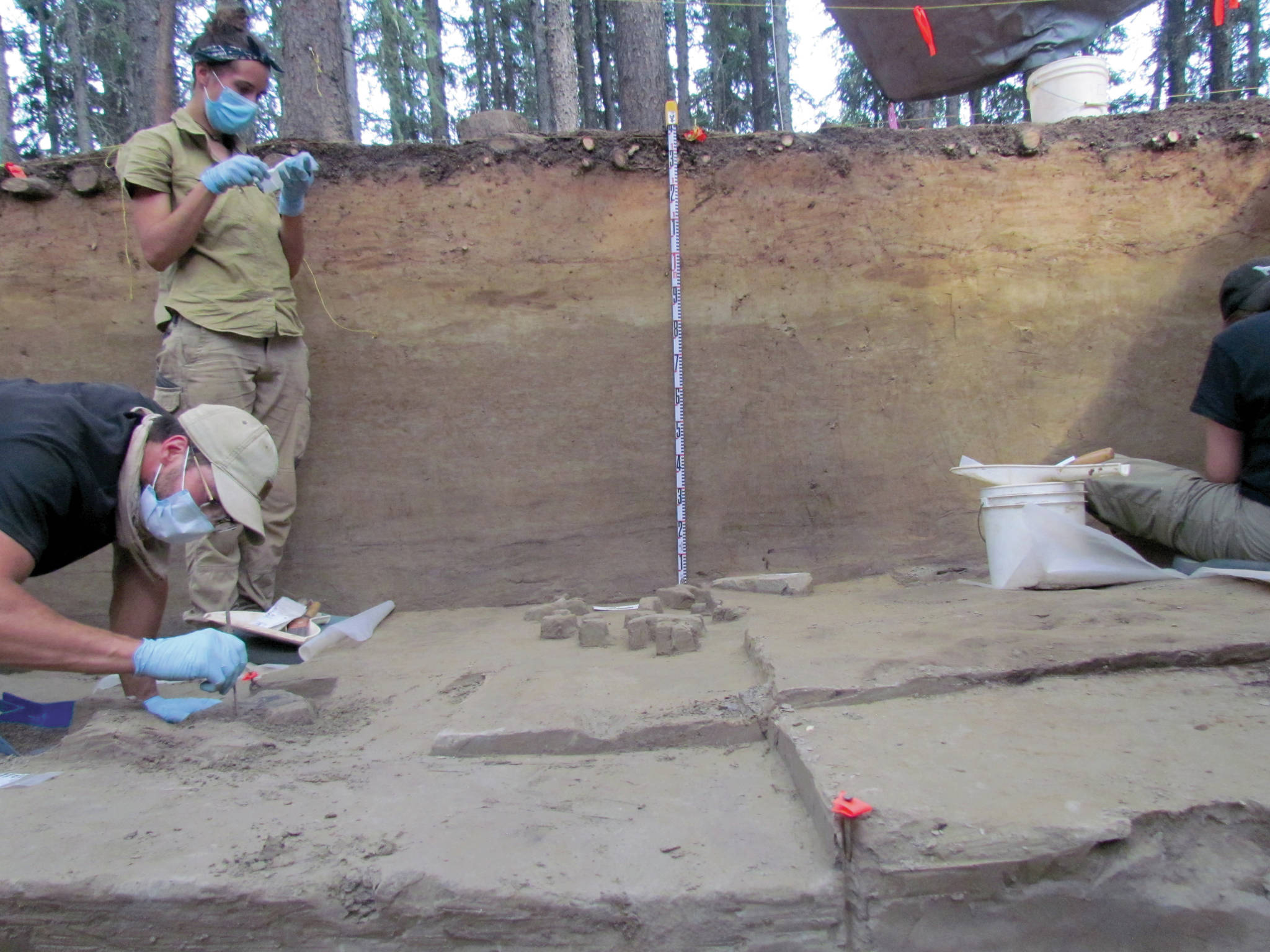Archaeology. OK, what was the first thing that came to your mind when you read that word? I hope it wasn’t Indiana Jones, or dinosaurs!
Archaeology is the scientific study of the things that past humans left behind. We often think of those things left behind — called “artifacts” — as ancient, but what if I told you there are artifacts aplenty in the modern campground fire pits of the Kenai National Wildlife Refuge?
It’s true. An artifact is, by definition, any object that has been made or modified by humans. So, a 12,000-year-old stone tool is an artifact, but so is the computer or newspaper that you are reading from right now.
One day I was shoveling ash out of the fire pits at Hidden Lake Campground in the Skilak Wildlife Recreation Area. Mixed in with the ash and bits of charcoal were all kinds of half-burned garbage that campers had thrown into the flames.
I realized I could tell a lot about the people who had stayed here just by examining what they left behind. Based on the “artifacts” they left for me — a melted hot dog wrapper, blackened beer cans and cigarette butts — I could guess that they had tube steaks for dinner, drank Bud Light, and at least one person smoked.
The simple presence of the trash told me something too — someone was neglecting Leave No Trace! By making these observations and using them to come to conclusions, I was actually doing archaeology. Not the well-planned, meticulous excavation that archaeology normally is, but still.
Obviously, the campers that tossed their garbage in the fire pit didn’t give it a second thought. Interestingly, this is very similar to how traditional archaeological finds get deposited, too.
Think about it. Were people tens of thousands of years ago worried about how their activities would be viewed in the archaeological record? Of course not. They were just going about their daily lives, just like we do now.
Much of what archaeologists find was never meant to be found at all. Archaeologists sift through the refuse, the leftovers, the garbage that was tossed aside without a second thought so long ago, to learn about the people that were here before us. And so those artifacts that were dropped nonchalantly take on great importance for archaeologists.
To illustrate my point, a story:
13,000 years ago. A hilly, wind-swept tundra in central Alaska, north of present-day Delta Junction. A small group of people gathers on a low ridge above a wide, muddy river.
One of them, a young man, sits among them. He is bored and a little hungry. Others are busy with their own chores and pay no attention to him. He squats there, grumbling, chipping at a piece of basalt stone with another stone.
The man is sharpening the blade of a stone tool used for processing game meat. As he refines the cutting edge, tiny flakes of basalt are knocked off, flying around and forming a random pile at his feet.
Our toolmaker pays no heed to these. He is concerned only with the finished product. Diligently, if recalcitrantly, he goes on with the work.
Finally satisfied the blade will cut well, and relieved to be done with this tedious task, the man stows the tool and rises to leave as the others in his group begin to do the same. The party quickly moves on, and no further thought is given to that pile of basalt flakes left in the wake of the young man’s chore.
Many, many years pass. Time and the forces of nature bury the bits of stone almost 6 feet underground. Then, in summer of A.D. 2019, international students with Adelphi University’s archaeology field school dig up those same basalt flakes.
Discovering the flakes is a super cool experience for the students, and very interesting for their professors. Each tiny piece is carefully described, drawn on a map, measured (in millimeters), bagged up, labeled and electronically logged with a high-tech (and very expensive) laser transit.
So, why so much fuss over some old bits of rock? Because they can tell us all kinds of things about the people that created them: what kinds of stone they used to make tools, where they got the stone from, what kinds of tools they made, where the people went, when they were here, and so on.
But for the prehistoric toolmaker, they were just a byproduct of his daily activity, and held no more meaning for him than pencil shavings.
It’s easy to understand why he thought this way. Think about the waste we produce on a daily basis and then, without a care, chuck out and forget. The only difference is basalt is a totally natural material and doesn’t harm the environment. Our trash is not and does.
The bits of garbage I found in the fire pits of Hidden Lake Campground were artifacts, too. However, these don’t tell a story of a hardy people with impressive toolmaking skills; they just tell me some of our campers are a bit messy.
Archaeology doesn’t happen exclusively at incredible sites like Pompeii in Italy and Machu Picchu in Peru. It happens in mundane places, like your own backyard. As we’ve seen, archaeologists very often recover artifacts in places that the people who dropped them would never dream of being important or interesting.
Think about that next time you’re about to toss a can in the woods or drop some tinfoil in the fire. Let’s all practice solid Leave No Trace principles this summer so future archaeologists (and park rangers) have nothing to report but clean and tidy campgrounds.
Jack Carroll is a seasonal ranger at the Kenai National Wildlife Refuge. For more details on camping and other outdoor recreation this summer, visit kenai.fws.gov or find us on Facebook.
By JACK CARROLL
Kenai National Wildlife Refuge

